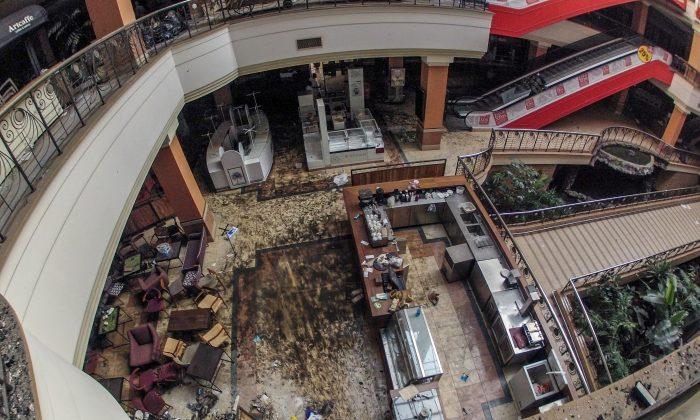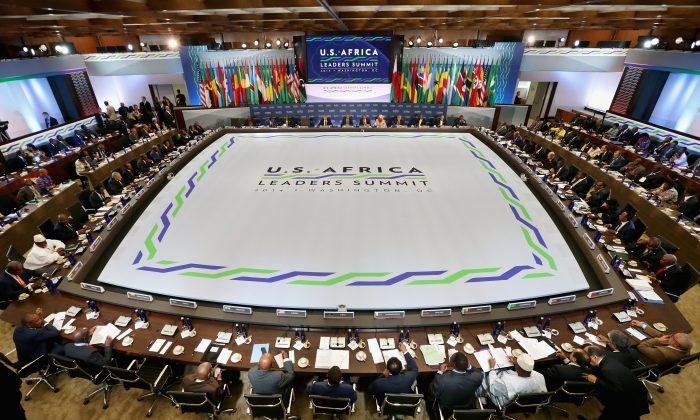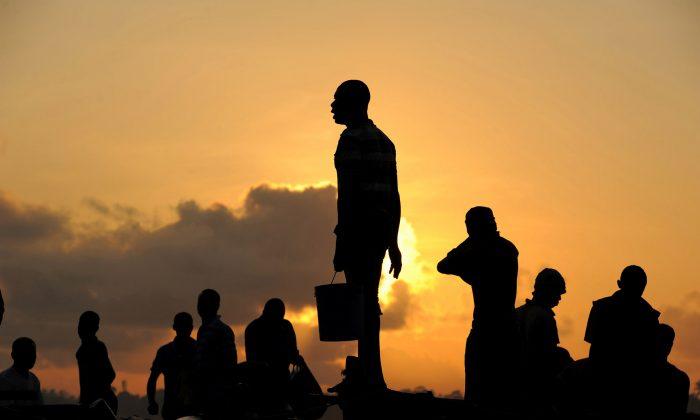I’m growing increasingly frustrated with Western media coverage of the recent terrorist attacks at the Westgate Mall in Nairobi. Pick your poison from any major media outlet.
I’ve read over 50 accounts of the tragic events. The same themes keep circling around: how the mall was the symbolic reaffirmation of a rising Kenyan middle class, which contrasted with the reality of a very poor East African region; how the attacks can be explained by the fact that Kenya is geographically situated at the intersection of a very politically unstable, violent, and poor region; how Westgate Mall was chosen as the target of the attacks because it was run by Israelis and because it was a high-end social establishment (read: conspicuous consumption) frequented by the Kenyan upper class, expats, and foreign nationals; and how the attacks prove that al-Shabab is a more remarkable terrorist threat than originally anticipated.
As journalists continue to insist on these themes, never diving deeper into the context in which the attacks occurred, these superficial descriptions with misrepresenting pseudo-facts are all that we are left with.
Western media depicts the tragic massacre in this way because there is a large unsuspecting audience that will buy into these shallow accounts of the event. After all, it makes sense that some poor furious Somalis would come together and conspire to randomly shoot at some rich, non-Muslim Kenyans, right?
With such “themes” rehashed at every corner of the Western media, let’s review them in more detail.
Theme 1: Economic Discrepancies Are to Blame for the Attack
Nairobi is a dangerous city. It is also a city that is becoming increasingly more segregated along economic lines. When I lived in Nairobi, there were things I very well knew not to do. Ever. It was like a playbook I followed. Don’t walk alone at night. Only take taxis to visit friends, nightclubs, or other events. Stay away from certain neighborhoods (especially during the night). Never go to certain areas unless you are accompanied by a respected member of that community (Kibera slum, for example).
But what major city in the United States doesn’t deal with the exact same demarcations? Are Chicago, Boston, or New York any different? Poverty, disfranchisement, uneven opportunities exist everywhere. As we all know, this doesn’t mean the poor come together, like the chimps in “The Rise of the Planet of the Apes,” to unleash their rage against their oppressors. That is fiction.
Poverty is never a catalyst strong enough to drive terrorist attacks against the rich. Who among us hasn’t fantasied about living in the luxurious houses in Malibu or The Hamptons that we see on TV? Have you then contemplated joining a group of terrorists and shooting indiscriminately at residents just because they have what you don’t? Of course not. So why would we think this could happen in Africa?
Theme 2: The Westgate Mall Was Chosen Because It Was Run by Israelis
This is another over-emphasized note that almost every article in the Western media throws in when covering the massacre. The confirmed attackers were all Muslim. By all accounts, some shoppers were released simply because they revealed their Muslim faith. If that is so, it only makes sense that the people behind the attacks chose an Israeli-run establishment, right? After all, Jews and Arab Muslims have a long history of … disagreement. So the people behind the attacks must have chosen this location because it was run by Israeli businessmen, correct? Due to the contentious history of interactions between Jews and Muslims, it only makes sense that this inter-faith animosity can be used to explain why this location was chosen.
Well ... not quite. Let’s revisit the schematic definition of terrorism given by the U.N. General Assembly in 1999. Terrorism comprises “criminal acts intended or calculated to provoke a state of terror in the general public, a group of persons, or a particular person for political purposes.” In other words, a big bang for the money that instills fear at a local, national, and international level. Terrorists want you to apply the mottos “Nobody is safe” and “You can be next” to yourself.
If that is what the terrorists are after—and the quick announcement by the al-Shabab group that they were behind the attack suggests this—what other location could they have chosen in Nairobi? Outside of the U.S. Embassy and the United Nations Office (two of the most highly guarded compounds in Nairobi), Westgate Mall was perhaps the most convenient location.
Let me put it another way: if the shooters were to have targeted residents of the Kibera slum, would this ever have made international news? Of course not.
Choosing Westgate was strategic due to its location and importance within the expat community. It was an establishment that was bound to receive international coverage in the aftermath. The “terror” message was sure to be broadcast around the world. That’s why targeting this location made sense.
Theme 3: The Attacks Show How Significant the al-Shabab Threat Is
Al-Shabab, like al-Qaeda, is a brand. It’s a franchise that various regional cells can appropriate and tap into, depending on the needs and aspirations of those localized groups. Behind these attacks, there’s a charismatic leader who had the skills to recruit and brainwash the men and women who carried out the carnage. Still, to even believe that the mastermind was constantly in touch with the al-Shabab leadership during the planning and execution of these attacks is just plain silly. The very success of this kind of mission is predicated on little to no communication. To be sure, how and by whom the attackers were recruited, and how they were made to buy into this enterprise, are legitimate questions that are in dire need of an answer. Without a doubt, al-Shabab is a threat that must be reassessed. Even so, to simply link the terrorist attacks to the rise of al-Shabab in East Africa is to do injustice to the historical context and the conditions that led to this tragic event.
The Things Media Always Fails to Cover
The problem with Western media covering dramatic events in the developing world is then twofold. On the one hand, ideas and explanations (like the ones dismantled above) find an audience because they resonate with Euro-Atlantic audiences. “It makes sense” to many of us who don’t even know where Kenya is on a world map. Yet these accounts often fail to accurately reflect the reality on the ground. At best, these explanations are incomplete; at worst, they are blatantly misleading and incorrect.
On the other hand, these lines of reasoning prevent us from looking into what’s truly at stake behind these attacks. The carnage didn’t occur in a vacuum. It occurred in a country that has long suffered from fundamental problems constantly being exposed by NGOs, international donor organizations, and a few journalists: rampant corruption, extreme poverty, ethnic and religious animosity, and uneven access to educational opportunities.
But to be clear: These are conditions that negatively impact youth all over the world. Some children of Somali immigrants in Minnesota have left their families to join militant groups in the Horn of Africa and the Middle East. Over the last decade, previous attacks in the United Kingdom, France, and Spain were made possible with the assistance of disenfranchised and disillusioned young people who found the idea of inflicting terror on their perceived oppressors more appealing than making a living in their adopted countries.
How youngsters end up so desperate as to resort to these acts is never something the media attempts to cover. That question is not a hot topic since it deflects us from our instinctual reaction to the events: attempting to assign blame. We are so keen on finding the culprits that even the thought of trying to fix the underlying conditions which staged the setting in which this event happened, simply escapes us.
The 50-plus articles published in the week after the incident began reshuffle the same inadequate ideas, presenting no insights into the depths of everyday Kenyan despair or new takes on the seemingly insurmountable problems. So, the next time terror is upon us, we will once again attempt to find culprits, assign blame to the usual suspects, and cry wolf.
We’re like hamsters on a wheel: so busy running as fast as possible we don’t realize the wheel is only spinning in place, not moving forward.
Codrin Arsene writes about African political and cultural affairs. He is a Chicago-based anthropologist who lived and worked in Tanzania and Uganda.




